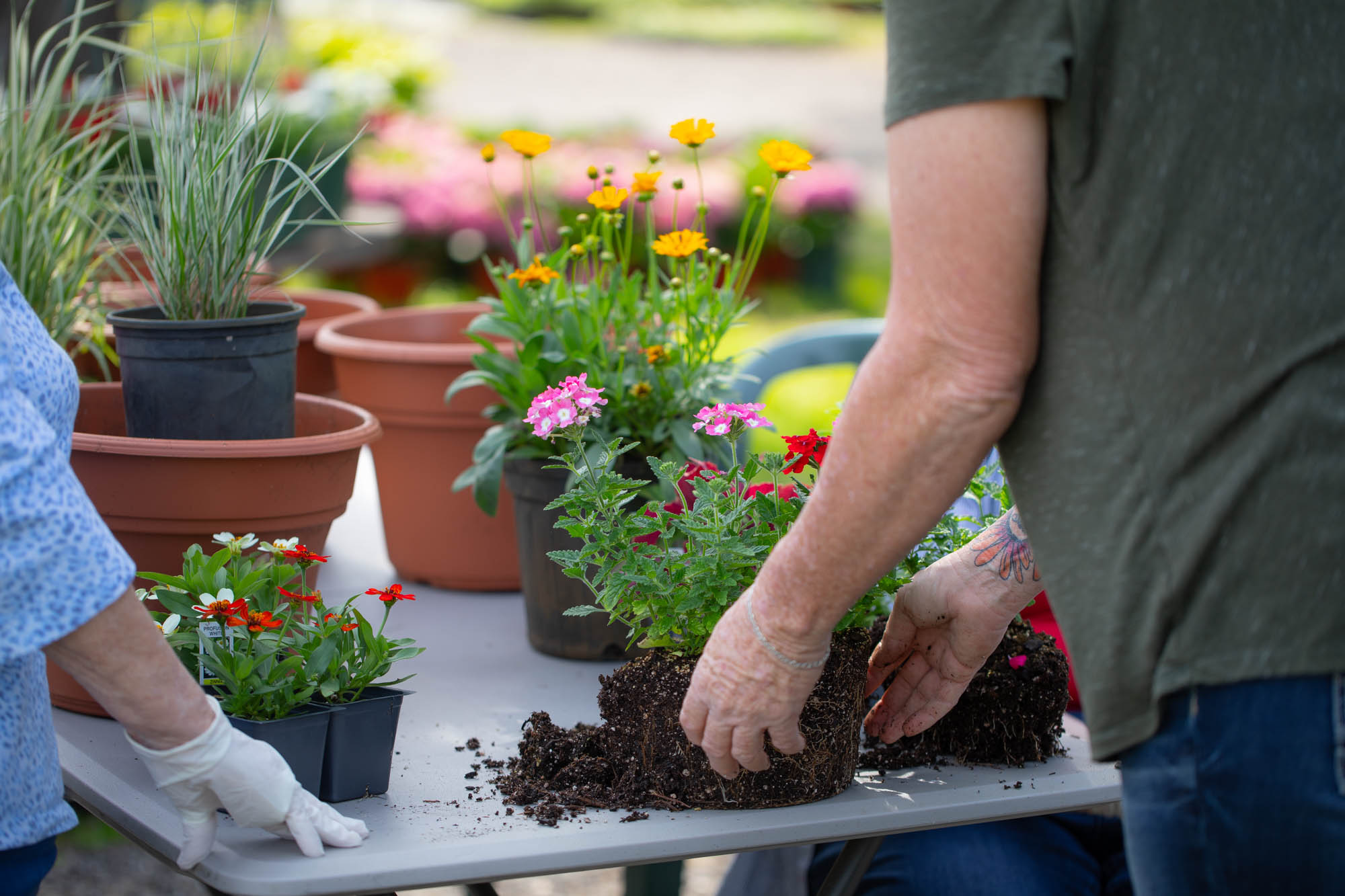The Secret to a Thriving Garden in Tyler, Texas
Gardening is about more than just plants—it all starts with the soil. Here in Tyler, Texas, what’s beneath your feet can be the key to a flourishing garden. But how do you know if you have the right “stuff”? Let’s talk about the dirt in your yard, your pots, your hanging baskets, and your flower beds, and how to get it right.

What’s in Your Soil? The “Touch Test”
The soil in your yard is unique, and it’s a living ecosystem. The first step to understanding it is to get your hands dirty. Grab a handful of your garden soil and feel it. Does it feel gritty and fall apart easily? You might have sandy soil, which drains well but struggles to hold nutrients. Does it feel slick and sticky when wet? You likely have a clay-heavy soil, which holds moisture but can be very dense. The perfect soil—loamy soil—feels rich, slightly crumbly, and holds its shape without being sticky.
Knowing your soil type is crucial. Our red clay is famous in East Texas, and while it’s rich in iron, it can be a challenge. That’s where amendments come in. By adding organic matter like compost or pine bark, you can improve drainage in clay soil or help sandy soil retain moisture and nutrients.
Amending Your Soil: The Right Way
Whether you’re starting a new flower bed or refreshing an old one, amending your soil is the most important step. For your garden beds and pots, don’t just use what’s in your yard. Purchase high-quality potting mix and soil designed for the specific plants you’re growing. For hanging baskets, a lighter, peat-based mix is ideal for moisture retention and to prevent the basket from being too heavy.
There’s no need for a fancy lab test to get started. The “touch test” combined with observation is often all you need. Is water pooling in your beds? It needs better drainage. Are your plants looking yellow or stunted? They likely need more nutrients.
Ditch the Comparison: Your Garden is Unique
We’ve all looked over the fence and wondered why our neighbor’s hydrangeas look so much better. The truth is, every yard is different. The amount of sun, the flow of water, and especially the soil can vary dramatically from one yard to the next, even on the same street. Don’t compare your garden to your neighbor’s; focus on understanding your own little piece of East Texas and giving it what it needs.
By taking the time to understand your soil, you can create a happy, healthy home for your plants. It’s the most important investment you can make in your garden.